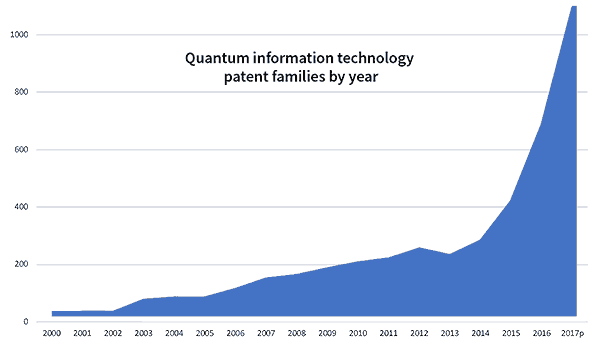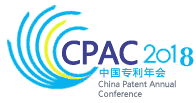Quantum computing and beyond: Can patent landscaping predict the future?
Quantum computing is going to change the world, and it’s no longer the stuff of science fiction. It represents a leap in computing power as massive as the jump from a vacuum tube filled mainframe to the latest iPhone and will solve problems too complex for today’s computers.
A series of patent landscape reports from Patinformatics, the firm of industry expert Tony Trippe, shows a recent explosion of patent applications and grants which are leading to some of the first real-world quantum computers. The number of filings has increased by more than 380% since 2014.

So, just what are patent landscape reports and why are they helpful for understanding the state of quantum computing? The definition that Trippe refers to is:
“Searching for, evaluating, and analyzing a large set of patent documents for the purpose of deriving insights from the general direction in which patent metrics are developing or changing in order to support policy, business, and research/development decisions.”
Learn more about recent quantum computing developments and patent landscaping.
US Patent number 10 million sheds light on industry trends
If you’re interested in knowing what the future direction of technology is, monitoring patent trends can tell you a lot. While not every patented invention makes its way into a product, if a lot of new patent applications focus on a particular area, you can be reasonably sure this development will show up in a real-world application.
The ten millionth patent issued by The United States Patent and Trademark Office (UPSTO) on June 19, 2018 is a good example. Granted to Raytheon and invented by Joseph Marron, the title of “Coherent Ladar Using Intra-Pixel Quadrature Detection” is one of many that offers improvements on measuring distance.

Given that LADAR can be used for autonomous vehicles, the 10 millionth patent fits into our roundup of eight quickly growing technologies, published this January. Patent Classification G05D “Systems for Controlling or Regulating Non-electric Variables” grew at a compound annual rate of 27% from 2013 to 2017. This includes automatic pilots for air and land vehicles, which is relevant to LADAR.
Read more about patent monitoring in our blog post on monitoring technology trends.
New data additions to CLAIMS® Direct
At IFI, we're constantly improving and adding records to CLAIMS Direct. Recent highlights include enhanced machine translations, Orange Book pharmaceutical data, and new records from Korea and Brazil. Learn more about our recent additions.
Seeking blog contributions
Would you like to share a recent patent data project? The IFI website regularly gets more than 3,000 unique visitors a month, so writing a blog for us is an excellent way to gain exposure for your hard work. Email us for more information.
Featured Partner


The European Bioinformatics Institute offers a free bioinformatics database. It is sponsored by the European Molecular Biology Laboratory (EMBL), a publicly-funded non-profit institution. The EBI service is aimed at helping researchers search and access the chemical data contained within patent documents. The system uses a data processing pipeline to identify and extract the chemical entities from patent text and images. The website allows users to quickly identify patents relevant to their particular field of research by offering both chemical and Lucene based search functionality.
Where we'll be

|
ACS National Meeting & Expo August 19–23 Boston |

|
China Patent Annual Conference (CPAC) August 30–31 Beijing |

|
IP Week September 4–5 Singapore |
p.p1 {margin: 0.0px 0.0px 0.0px 0.0px; font: 9.0px Arial}
span.s1 {font-kerning: none}
td.td1 {width: 469.0px; margin: 0.5px 0.5px 0.5px 0.5px; padding: 5.0px 5.0px 5.0px 5.0px}